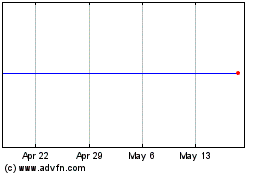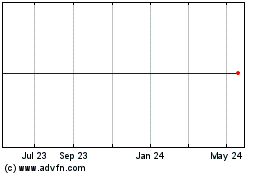MyoKardia, Inc. (Nasdaq: MYOK) today presented clinical and
non-clinical data related to mavacamten, MyoKardia’s investigative
therapeutic in late-stage development for the potential treatment
of hypertrophic cardiomyopathy (HCM), at the American Heart
Association’s Scientific Sessions 2020. Three poster presentations
were made available detailing exploratory analyses from Myokardia’s
Phase 3 EXPLORER-HCM study of mavacamten for the treatment of
obstructive HCM and from the Phase 2 MAVERICK-HCM study of
mavacamten in patients with non-obstructive HCM, as well as
non-clinical results of a mavacamten surrogate compound in a large
animal model.
“These data add detail to the emerging picture
of mavacamten’s beneficial impact on the HCM heart, including
improvements in cardiac pathophysiology, diastolic function and
biomarkers of disease progression,” said Jay Edelberg, M.D., Ph.D.,
MyoKardia’s Chief Medical Officer. “HCM is characterized by the
thickening of the heart muscle and constraints on diastolic
filling. Having repeatedly demonstrated that mavacamten can have a
profound effect on reducing the obstruction of the left ventricular
outflow tract in HCM, echocardiography data from our EXPLORER-HCM
trial show that in just 30 weeks of treatment, mavacamten is
gradually bringing measures of cardiac structure closer to a normal
state, improving parameters of diastolic function and reducing
biomarkers of disease. We are optimistic that these changes may
ultimately point to the benefits of mavacamten treatment in the
progression of HCM.”
Mavacamten Favorably Impacts Key
Pathophysiologic Processes in Obstructive Hypertrophic
Cardiomyopathy: Results From the EXPLORER-HCM Study
An exploratory analysis from the Phase 3
EXPLORER-HCM clinical trial of mavacamten for the potential
treatment of symptomatic, obstructive HCM investigated the changes
from baseline to Week 30 on specific measures of the heart’s
structure and function using serial echocardiograms (ultrasounds of
the heart).
- Treatment with
mavacamten led to statistically significant reductions in left
ventricular mass (LVMI), indicating that mavacamten is having an
effect on cardiac structure. LVMI has been shown to be a predictor
of HCM-related mortality.
- Mavacamten
treatment improved left ventricular relaxation (which in turn led
to improved cardiac filling pressures). Statistically significant
improvements (p<0.0001 for difference from placebo) were
achieved across diverse echocardiographic measurements of diastolic
function (LA volume index, lateral e’, lateral E/e’, septal e’, and
septal E/e’).
- Significantly
more mavacamten-treated patients achieved resolution of mitral
valve systolic anterior motion (SAM) compared to placebo (80.9% vs.
34.0%; p<0.0001), and 9% achieved resolution of mitral
regurgitation (MR) in the mavacamten group vs. none in placebo
(p=0.0006). SAM and MR may cause or contribute to obstruction
of the left ventricular outflow tract and are known to impact
cardiac performance and increase risk of serious cardiovascular
complications, such as arrhythmias.
- Mavacamten
treatment resulted in significant reductions in cardiac biomarkers
of myocardial wall stress and injury compared to placebo.
Specifically, there was an 80% greater reduction in NT-proBNP and a
41% greater reduction in cardiac troponin in the mavacamten
treatment group vs. placebo.
- Patients with
the highest degree of obstruction at baseline achieved greater
improvements in echocardiographic parameters and biomarker
reductions.
Accelerometer-measured Activity in
Non-obstructive Hypertrophic Cardiomyopathy: Patient-generated
Activity Measures Correlate With, and are Convolutional Neural
Network Predictors of, Clinical Parameters in the MAVERICK-HCM
Study
MyoKardia’s Phase 2 MAVERICK-HCM study of
mavacamten was the first study to examine quantitative levels of
activity in a non-obstructive HCM patient population. As part of
the MAVERICK-HCM study, patients were asked to wear ActiGraph GT9X
Link wrist-worn monitors for up to 14 days between screening and
day 1 and between weeks 12 and 16 to record daily activity. A
multitask convolutional neural network (CNN) trained on raw
accelerometry, was also used to jointly predict clinical markers of
HCM severity.
Markers of physical activity drawn from
accelerometry, including average daily accelerometer units (ADAUs)
and step count, were associated with standard clinical markers of
HCM severity. Out the 59 patients enrolled in MAVERICK-HCM, 50
patients wore the accelerometer for ≥1 compliant day. Patients in
MAVERICK-HCM averaged 3,000 steps per day. Results from the
accelerometry exploratory analyses showed that higher physical
activity correlated with key clinical markers of HCM, including
exercise capacity as measured by peak VO2, changes in NT-proBNP
levels, and improvements in patient reported outcomes using the
Kansas City Cardiomyopathy Questionnaire (KCCQ), indicating that
accelerometry measures may be a useful indicator of drug activity.
CNN predictions of clinical measures from activity data found
strong correlations for pVO2, NT-proBNP, KCCQ score, and E over e
prime. These findings indicate that deep learning models can be
constructed to predict markers of HCM severity from patients’ raw
accelerometry data.
Chronic Treatment With A Mavacamten-like
Myosin-modulator (MYK-581) Prevents Left-atrial Remodeling,
Decreases Cardiac Troponin Leakage, And Blunts Mortality In A
Mini-pig Model Of Inherited Hypertrophic
Cardiomyopathy
Results from an in vivo study in a genetic
mini-pig model of HCM showed that chronic administration of a
mavacamten-like myosin-modulator blunted chronic cardiac troponin-T
leakage and decreased mortality, both characteristic of HCM
progression in this non-obstructive model. In addition, chronic
treatment also reduced left-ventricular and prevented left-atrial
remodeling, preserving normal left-atrial size as well as atrial
myofibrillar structure and function. Taken together, these
non-clinical observations provide additional evidence of
mavacamten’s activity beyond the reduction of LVOT obstruction and
support the emerging clinical evidence of mavacamten’s beneficial
effects on overall cardiac structure in the HCM heart.
About MyoKardia
MyoKardia is a clinical-stage biopharmaceutical
company discovering and developing targeted therapies for the
treatment of serious cardiovascular diseases. The company is
pioneering a precision medicine approach to its discovery and
development efforts by 1) understanding the biomechanical
underpinnings of disease; 2) targeting the proteins that modulate a
given condition; 3) identifying patient populations with shared
disease characteristics; and 4) applying learnings from research
and clinical studies to inform and guide pipeline growth and
product advancement. MyoKardia’s initial focus is on small molecule
therapeutics aimed at the proteins of the heart that modulate
cardiac muscle contraction to address diseases driven by excessive
contraction, impaired relaxation, or insufficient contraction.
Among its discoveries are three clinical-stage therapeutics:
mavacamten (formerly MYK-461); danicamtiv (formerly MYK-491) and
MYK-224.
MyoKardia’s mission is to change the world for
people with serious cardiovascular disease through bold and
innovative science.
Forward-Looking
StatementsStatements we make in this press release may
include statements which are not historical facts and are
considered forward-looking within the meaning of Section 27A of the
Securities Act of 1933, as amended, and Section 21E of the
Securities Exchange Act of 1934, as amended, which are usually
identified by the use of words such as “anticipates,” “believes,”
“estimates,” “expects,” “intends,” “may,” “plans,” “projects,”
“seeks,” “should,” “will,” and variations of such words or similar
expressions. We intend these forward-looking statements to be
covered by the safe harbor provisions for forward-looking
statements contained in Section 27A of the Securities Act and
Section 21E of the Securities Exchange Act and are making this
statement for purposes of complying with those safe harbor
provisions. These forward-looking statements, including statements
regarding the clinical and therapeutic benefit and future potential
of mavacamten, the ability of our long-term studies to provide
further evidence of mavacamten’s potential to alter the course of
disease by gradually brining measures of cardiac structure to a
normal state, usefulness of raw accelerometry data to predict
markers of HCM severity in patients, and the ability of
non-clinical observations to provide additional evidence of
mavacamten’s activity beyond the reduction of LVOT obstruction,
reflect our current views about our plans, intentions,
expectations, strategies and prospects, which are based on the
information currently available to us and on assumptions we have
made. Although we believe that our plans, intentions, expectations,
strategies and prospects as reflected in or suggested by those
forward-looking statements are reasonable, we can give no assurance
that the plans, intentions, expectations or strategies will be
attained or achieved. Furthermore, actual results may differ
materially from those described in the forward-looking statements
and will be affected by a variety of risks and factors that are
beyond our control including, without limitation, risks associated
with the development and regulation of our product candidates and
any ongoing effects of the COVID-19 pandemic, as well as those set
forth in our Quarterly Report on Form 10-Q for the quarter ended
September 30, 2020, and our other filings with the SEC. Except
as required by law, we assume no obligation to update publicly any
forward-looking statements, whether as a result of new information,
future events or otherwise.
Contacts Michelle Corral
Executive Director, Corporate Communications and Investor Relations
MyoKardia, Inc. 650-351-4690 ir@myokardia.com
Hannah Deresiewicz (investors) Stern Investor
Relations, Inc. 212-362-1200 hannah.deresiewicz@sternir.com
Julie Normant
(media)W2O628-213-3754jnormart@w2ogroup.com
MyoKardia (NASDAQ:MYOK)
Historical Stock Chart
From Oct 2024 to Nov 2024

MyoKardia (NASDAQ:MYOK)
Historical Stock Chart
From Nov 2023 to Nov 2024


